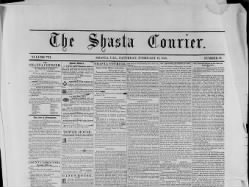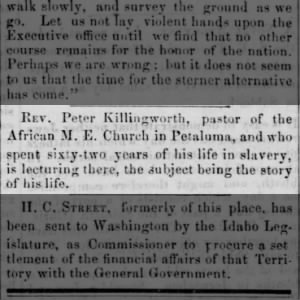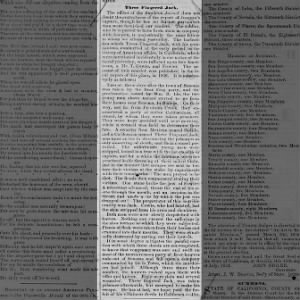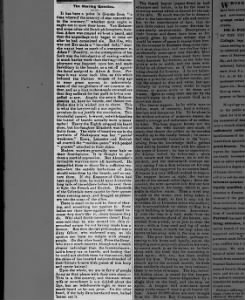
The Shasta Courier Archive
- Shasta, California
- 1853–1873
About
The California Gold Rush was short lived, but its impact was profound and enduring. Between 1848 and the mid-1850s hundreds of thousands of people moved into the state in search of easily accessible gold deposits. Most of these "49ers" settled in the Sierra Nevada region near the border with Nevada, but there was also an influx of prospectors into the northern counties of Siskiyou, Shasta, and Trinity, particularly after gold was discovered in Yreka in 1851. Often considered a second gold rush, the lesser-known "northern" mines that sprung up in this region that extended into southern Oregon were more isolated and rugged than those in the Sierra Nevada "Mother Lode". Most of the camps associated with them were also short lived. Though gold mining remained a prominent part of the regional economy for decades, the rush had largely ended by the 1860s. Most settlements were abandoned and forgotten, and only a few cities survived into the latter part of the century.
The California Gold Rush was short lived, but its impact was profound and enduring. Between 1848 and the mid-1850s hundreds of thousands of people moved into the state in search of easily accessible gold deposits. Most of these "49ers" settled in the Sierra Nevada region near the border with Nevada, but there was also an influx of prospectors into the northern counties of Siskiyou, Shasta, and Trinity, particularly after gold was discovered in Yreka in 1851. Often considered a second gold rush, the lesser-known "northern" mines that sprung up in this region that extended into southern Oregon were more isolated and rugged than those in the Sierra Nevada "Mother Lode". Most of the camps associated with them were also short lived. Though gold mining remained a prominent part of the regional economy for decades, the rush had largely ended by the 1860s. Most settlements were abandoned and forgotten, and only a few cities survived into the latter part of the century.
California "mining newspapers," as they were called by one of their first chroniclers, Helen Giffen, sprang up quickly in the comparatively few northern mining towns. Not only were they some of the earliest papers printed in the state, collectively they chronicled a region as it transitioned from often lawless and violent mining camps into more permanent settlements with organized governments and law enforcement. They also recorded the changing nature of mining and, as Giffen notes, "advocated mining and land reforms that were later written into California law."
The town of Shasta was, for nearly three decades, the largest community in the county of the same name and an important commercial and distribution center for the northern mines. Located along the Siskiyou Trail, which ran from Portland to San Francisco, the "Queen City of the Northern Mines" bustled with activity in the years after gold was discovered nearby in 1848. At its peak, Shasta was home to some 3,500 residents. In the mid-1880s, however, the newly constructed railroad bypassed Shasta in favor of Redding, about six miles to the east. The city eventually declined into a "ghost town," and today it is a state historic park.
Started on March 12, 1852 by Samuel H. Dosh, Jacob Carr Hinckley, and Archibald Skillman, the Shasta Courier was the first paper to appear in the northern mines. Its building burned twice in the following months, first in November and then again in June of 1853, causing brief cessations in publication. In 1858 Hinckley left the paper. The title changed in 1872 to the Weekly Shasta Courier, with William Lloyd Carter now its editor. By 1905, the paper had moved to Redding and again became the Shasta Courier.
Archive Info
- 3,700
- Shasta, California
- 1853–1873
Paper History
- The Weekly Shasta Courier
Source Information
The Shasta Courier, 1853–1872 [database on-line]. Lehi, UT, USA: Ancestry.com Operations, Inc., 2024. Last updated: November 29, 2022






